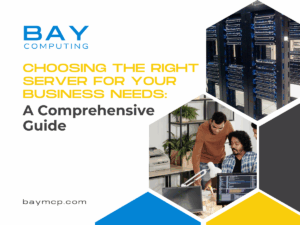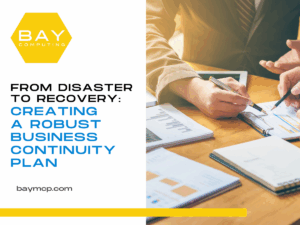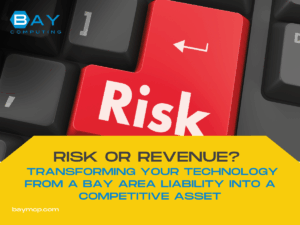A Guide to Cloud Migration: Is Your Business Ready?
Moving your company’s technology to the cloud is essential today. It promises flexibility, growth, and cost savings.
But many businesses rush the move without a solid plan. The result? They run into a painful problem: expensive chaos after everything is moved, leading to unexpected high bills and system slowdowns.
The biggest mistake is thinking that being “ready” just means having a budget. The real enemy isn’t the cloud itself; it’s the old, wasteful problems you bring with you. If you move your entire IT system without checking it first, you are guaranteed to get a huge, surprise bill. Success in the cloud means having clear, lower costs. To win, you need an expert guide and a clear plan.
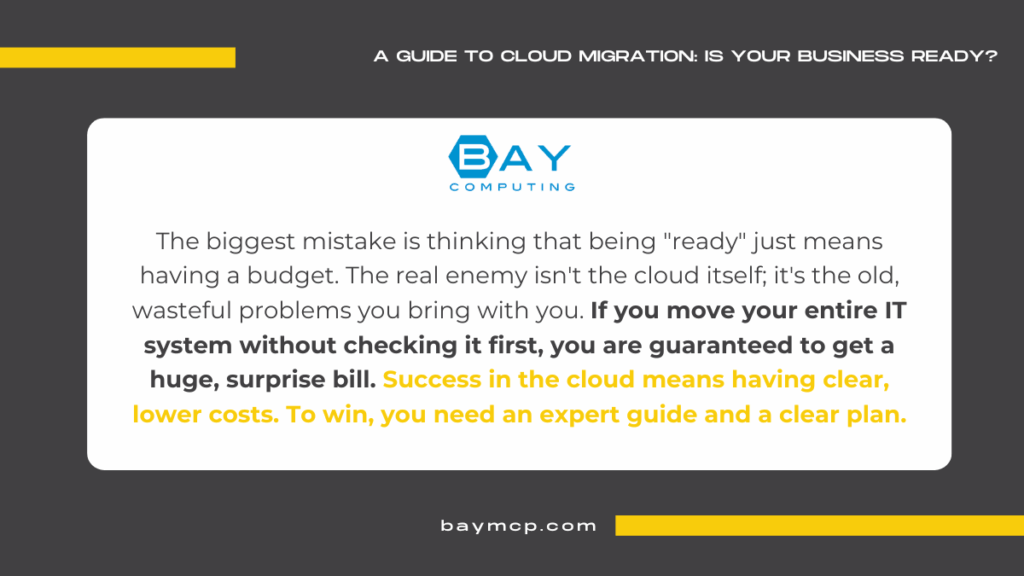
Step 1: Get Rid of the Waste
The first step for a successful move is to do a full checkup of your current IT setup. We call this the Migration Readiness Checkup. It’s the map that makes sure you don’t get lost.
This checkup finds the most crucial financial problem: “zombie” and “idle” applications. These are old, useless programs that are still running on your servers, wasting power and space. They give your business zero value.
If you move these wasteful programs to the cloud, they will immediately inflate your monthly bill. By finding and turning off these expensive, useless systems before you move, your business saves money instantly. This checkup turns a complicated move into a smart, calculated financial decision.
Step 2: Create a Smart Moving Plan
Once we know exactly what technology you have and what’s waste, our guide helps you make a plan. This plan uses a simple decision framework, the “R’s” of Cloud Migration, to decide the best path for every single application.
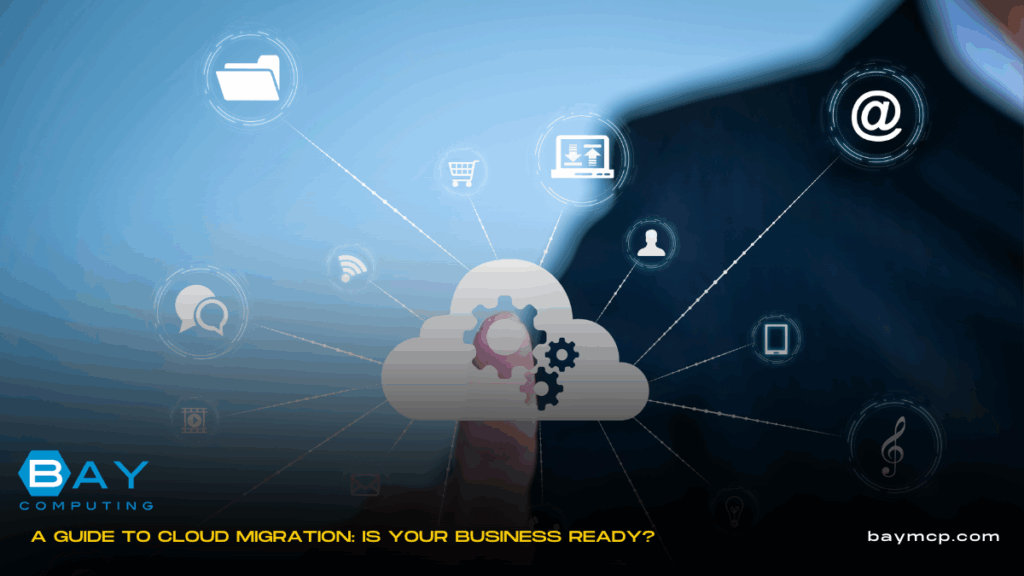
The core idea is simple: How fast do you want to move versus how much you want to improve?
Retire: Turn off and delete old applications that are useless. This is the fastest way to save money.
Rehost (Lift & Shift): Move the application as-is, quickly and with the lowest risk. It’s like moving furniture from one room to another without changing it.
Rearchitect: Rebuild or heavily change applications to use the cloud’s best, newest features (like serverless). This takes the longest but gives you the biggest, long-term gain.
This is where a partner’s expertise is vital. We help you choose the best ‘R’ for each application to get the most efficiency without slowing the entire project down. We make sure major rebuilding (Rearchitecting) is separate from the initial move to guarantee speed and simplicity.
Step 3: Secure the Budget (The Cloud Cost Control System)
For most companies, the main goal is now proving that the move actually saves money. This is because past, rushed moves can often result to that painful “surprise bill.”
To stop that surprise, you need a continuous budget control system called FinOps (Financial Operations).
Think of FinOps as the control panel of a car: it keeps your costs in check and alerts you to problems. FinOps is the system that makes sure the promise of cloud savings becomes a reality.
We set it up before you move to do three essential things:
See the Spending: It gives you clear, real-time visibility into what every application and team is spending in the cloud. No more guessing where the money goes.
Measure the Value: It checks that you are getting your full Return on Investment (ROI) for every dollar spent.
Optimize Automatically: It establishes the rules to automatically adjust resources—scaling them down when not needed—to stop waste and prevent budget failure.
The FinOps system gives your leadership the confidence that the cloud’s promise of efficiency will be a continuous reality and not just a one-time hope.
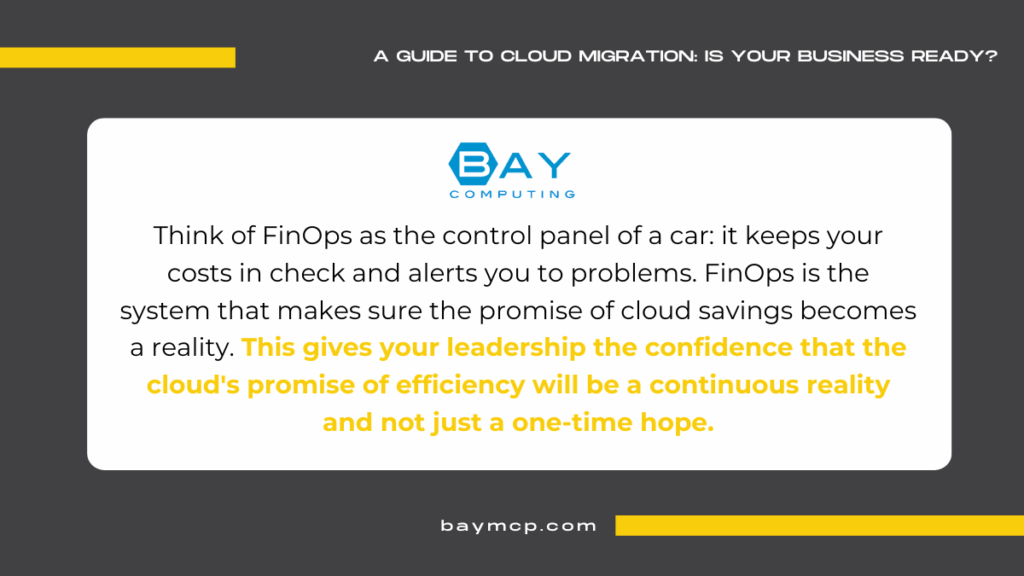
Step 4: Stay Secure and Fill the Knowledge Gap
Modern IT is complicated. Most businesses will use a hybrid cloud (a mix of their own servers and the public cloud) in the coming years. This setup is powerful, but because it involves linking different systems, security is non-negotiable. Your plan must secure this new setup first, as security is required for your mixed architecture to work safely and follow all rules.
This complexity also exposes a weakness: your staff might not know the new cloud tools. Training your teams to manage cloud services instead of physical servers is a must. This internal struggle is why more than 50% of companies now use Managed Service Providers (MSPs) to oversee their cloud workloads. They need the expertise they don’t have in-house.
Your Guide to Cloud Success: The Power of Partnership
The difference between a successful move and a costly headache is a rigorous initial checkup and a proven plan. A seasoned partner speeds up the process by providing the objective tools needed for the full checkup: from finding every application to the data-driven cost analysis.
Our guidance is crucial for moving from the ‘Checkup’ phase, which creates the strategy, into the ‘Moving’ phase, which sets up the new environment and moves the first applications. We manage complex projects, from setting up the new security to the mass data transfer and final testing.
(Move your business to the cloud effectively using our Cloud and Data Migration Services).

Choose Agility, Not Chaos
The risk of an unprepared move is lost money and a competitive disadvantage. Bay Computing is the guide that provides the clear, tested plan to move your business from confusion to clarity.
We are ready to partner with you on your sophisticated, risk-managed cloud migration solution, whether you are located across the US or specifically require our tailored cloud migration services in Massachusetts and throughout the Greater Boston, MA area. Contact Bay Computing today to start your data-driven Migration Readiness Checkup and secure an optimized transition of your business to the cloud.


